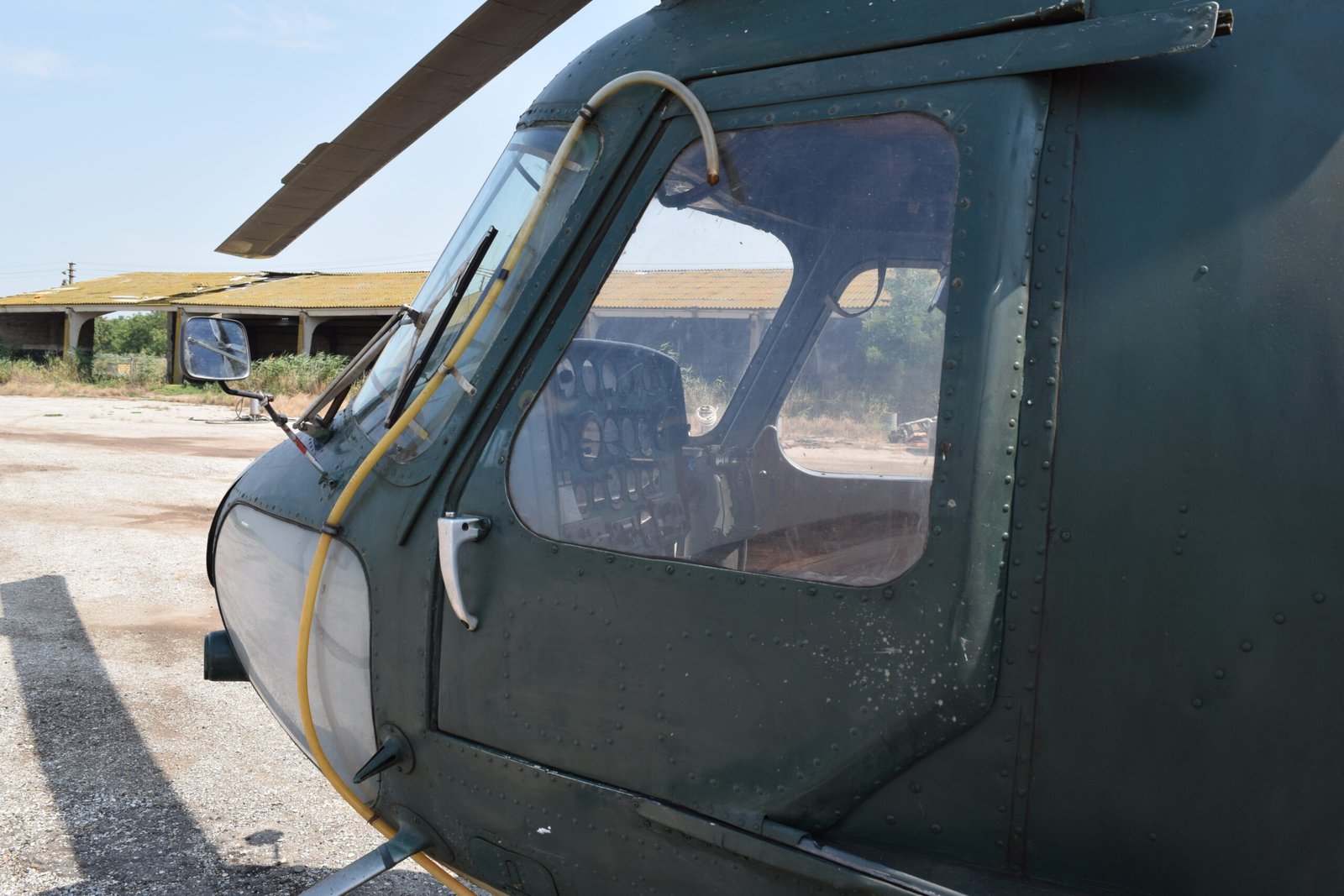pilot jobs
Wings of Change: How Aviation is Adapting to Environmental Challenges
As the world grapples with climate change, the aviation industry finds itself at a pivotal crossroads. The soaring demand for air travel, combined with concerns about environmental sustainability, has pushed the sector to embrace innovation like never before. From cutting-edge technology training programs to the rise of drones and online courses, aviation is evolving rapidly in response to these challenges.
One of the most significant technological advancements in aviation training is the use of simulators. Gone are the days when aspiring pilots relied solely on traditional flight instruction. Today’s state-of-the-art simulators provide an immersive experience that closely replicates real-world flying conditions. These high-fidelity environments allow students to practice maneuvers, develop problem-solving skills, and understand complex systems without leaving the ground. Moreover, they significantly reduce fuel consumption and emissions associated with training flights, thus promoting greener practices right from the start.
For those eager to delve deeper into aviation discussions and stay updated on industry trends, a plethora of blogs and websites exist. Some noteworthy mentions include “The Points Guy,” where you can find insights into airline loyalty programs; “AirlineReporter,” which covers airline news and reviews; and “Flying Magazine,” offering expert advice on various aspects of flying. Social media has also become an invaluable resource; platforms like Twitter host vibrant conversations under hashtags such as #AvGeek or #AviationNews, making it easy for enthusiasts to connect.
In addition to blogs and social media channels, numerous online courses offer aspiring aviators critical knowledge. Ground schools have transitioned online, providing flexibility for those who may not be able to attend in-person classes. Institutions like Embry-Riddle Aeronautical University and Purdue University Global offer comprehensive curricula covering everything from basic aerodynamics to advanced navigation techniques. Online platforms such as Coursera or Udemy also feature specialized courses tailored for specific interests within aviation—ideal for anyone looking to enhance their skills while balancing other commitments.

The increasing popularity of drones marks another transformative change within the aviation landscape. As technology advances, drones are being utilized across various industries—from agriculture monitoring to disaster relief efforts—showcasing their versatility beyond traditional flight operations. The Federal Aviation Administration (FAA) has been proactive in establishing regulations that facilitate safe drone operations while promoting innovation in this burgeoning field. For prospective drone operators or enthusiasts wanting more information about regulations or certification processes, visiting FAA’s dedicated drone page provides essential resources.
Pilot jobs continue evolving alongside these changes too! The industry’s push towards sustainability has led airlines to seek candidates skilled not only in flying but also knowledgeable about eco-friendly practices. Companies are increasingly looking for pilots who understand green technologies or have experience operating electric aircraft—a trend that will likely gain momentum in coming years.
To navigate this ever-evolving landscape effectively, staying informed through reliable sources remains crucial. The FAA’s official website serves as a treasure trove of information regarding licensing requirements, regulations updates, and safety guidelines—ensuring aviators remain compliant while pursuing their passion.
In conclusion, aviation stands at a remarkable juncture where tradition meets innovation driven by environmental necessity. With enhanced training methods using simulators, accessible online education platforms, exciting opportunities with drones—and a commitment toward sustainable practices—the future looks bright for those ready to embrace these wings of change!
Exploring the World from Above: The Rise of Drone Delivery Services
In a world that craves convenience, the aviation industry has soared to new heights, merging cutting-edge technology with innovative service models. One fascinating development is drone delivery services, which are transforming how we think about logistics and transportation. As drones become more prevalent in our skies, understanding the foundational elements of aviation technology and training becomes essential.
Aviation today is not just about flying planes; it’s a blend of science, technology, and creative problem-solving. Aspiring aviators often start their journeys through simulators—virtual platforms that replicate real-world flying experiences without leaving the ground. These simulators have evolved dramatically over the years, providing realistic environments that help students grasp complex concepts while honing their skills. From basic flight maneuvers to advanced navigation techniques, simulators offer an invaluable tool for both novice pilots and seasoned professionals seeking to sharpen their expertise.
If you’re interested in diving deeper into aviation topics or keeping up with industry trends, numerous blogs and websites cater to enthusiasts and professionals alike. Some noteworthy mentions include “Airliners.net,” where aviation photography meets discussions on commercial air travel. Another great resource is “The Aviation Herald,” offering insights into accident reports and safety information. Additionally, social media platforms host vibrant communities such as “FlyByWire” on Twitter or various Facebook groups dedicated to pilot training and aircraft appreciation.
For those looking to break into the field—or simply expand knowledge—online aviation courses have flourished in recent years. Ground schools like King Schools or Jeppesen provide comprehensive programs covering everything from private pilot licensing to instrument ratings. Increasingly popular are MOOCs (Massive Open Online Courses) offered by institutions like Embry-Riddle Aeronautical University that cover diverse topics within aviation management and aerospace studies. With flexibility at your fingertips, these online options make it easier than ever for individuals to gain valuable skills at their own pace.

Of course, no discussion about modern aviation would be complete without mentioning job opportunities available for pilots today. The demand for qualified aviators continues to grow alongside technological advancements in air transport systems. According to forecasts from the FAA (Federal Aviation Administration), thousands of new pilots will be needed in the coming years due to retirements and increased air traffic demands—a golden opportunity for aspiring aviators!
As we embrace this new era of aerial innovation, drones have emerged as game-changers in delivery services across various sectors—from e-commerce giants delivering packages directly to doorsteps within hours to medical supplies reaching remote areas quickly and efficiently. The FAA plays a crucial role here too; they regulate drone operations ensuring safety while encouraging innovation through initiatives like Part 107 certification for commercial drone pilots.
For anyone wanting more information on regulations or educational resources related specifically to drones, visiting the official FAA website is imperative. They provide guidelines not only on operations but also on legalities surrounding drone usage—essential knowledge for those venturing into this exciting field.
With each passing day, the synergy between aviation technology and everyday life strengthens exponentially. Whether you’re considering becoming a pilot or simply fascinated by how drones reshape logistics infrastructure worldwide—the sky’s truly no longer the limit! Embrace this thrilling journey above us—it’s boundless!
The History of Aviation: Milestones That Changed the Skies
Aviation is a tale spun from dreams, engineering marvels, and relentless human curiosity. From the first attempts at flight to the modern-day technological advancements that define aviation, each milestone has significantly altered how we traverse our skies. As we delve into this captivating history, it’s essential to consider how technology and training have evolved alongside these breakthroughs.
The journey began in 1903 when the Wright brothers achieved powered flight with their iconic Flyer. This moment opened a gateway to innovation that would only accelerate over the decades. With advancements in materials and aerodynamics came more sophisticated aircraft designs, leading us to the golden age of aviation in the 1920s and 1930s. Fast forward to today, where technology reigns supreme—aircraft are now equipped with state-of-the-art avionics that enhance safety and efficiency.
Training has also transformed dramatically since those early days. Gone are the simplistic methods of yesteryear; contemporary pilot training heavily relies on simulators that replicate real-world flying conditions. These sophisticated systems allow aspiring pilots to hone their skills without leaving solid ground. Simulators provide an immersive experience, enabling trainees to navigate through various scenarios—from routine takeoffs to unforeseen emergencies—without risking lives or aircraft.

In addition to practical training tools like simulators, numerous resources exist online for avian enthusiasts and professionals alike. A myriad of blogs and websites cater specifically to aviation aficionados:
1. **Airliners.net** – A community-driven site filled with photographs and discussions about commercial aviation.
2. **FlightGlobal** – Offers industry news, insights on trends, and reports on aircraft developments.
3. **Pprune.org (Professional Pilots Rumour Network)** – An engaging forum where aviators share experiences and advice.
4. **AOPA (Aircraft Owners and Pilots Association)** – A vital resource for pilots seeking information about regulations, advocacy, and education.
Social media platforms have also become a treasure trove for those passionate about flying. Twitter accounts like @TheFlyingEngineer provide fascinating insights into technical aspects of aviation while Instagram showcases stunning aerial photography through hashtags like #aviationlovers or #pilotlife.
Furthermore, online courses are revolutionizing pilot education by making it accessible regardless of geographical constraints. Ground schools offer comprehensive programs tailored for both novice aviators eager for their Private Pilot License (PPL) as well as seasoned professionals pursuing advanced ratings or endorsements. Websites such as Sporty’s Pilot Shop deliver interactive courses covering everything from basic aerodynamics to advanced navigation techniques.
In today’s rapidly advancing world, drone technology has emerged as another transformative force in aviation history. Initially used primarily for military purposes, drones have found applications across industries—from agriculture monitoring to search-and-rescue missions—and even recreational use among hobbyists! Understanding drone operation is crucial as regulations evolve; resources like FAA.gov provide valuable guidance on certification requirements for drone pilots.
For those contemplating a career in aviation—a field brimming with opportunities—resources abound! Aspiring pilots can explore job boards like Indeed or Glassdoor specifically geared towards aviation careers while networking through platforms such as LinkedIn opens doors within this competitive industry.

The evolution of aviation continues unabated; each advancement builds upon past achievements while propelling us toward new horizons yet unexplored. From cutting-edge simulators aiding future pilots’ training processes to the ever-expanding realm of drones redefining airspace usage—the milestones that shaped our skies are just beginning! Whether you’re an aspiring aviator or merely captivated by flight itself, embracing these developments ensures you remain grounded in this thrilling journey through time aloft.
Flight Paths: How Aviation is Shaping Global Connectivity
In an era where the world feels smaller than ever, aviation plays a pivotal role in knitting together distant regions, cultures, and economies. The advancements in technology not only enhance safety and efficiency but also shape the future of global connectivity. As we soar through the skies, let’s explore how aviation technology training, online resources, and emerging trends like drones are revolutionizing this industry.

Aviation technology has come a long way since the days of wooden biplanes. Today’s pilots rely heavily on sophisticated simulators that replicate various flying conditions and scenarios. These state-of-the-art training tools allow aspiring aviators to hone their skills without leaving the ground. Simulators provide a risk-free environment for learning, enabling pilots to navigate thunderstorms or emergency situations while receiving real-time feedback from instructors. This shift towards virtual training is not just cost-effective; it enhances safety by ensuring that pilots are well-prepared before they take to the skies.
For those looking to delve deeper into aviation beyond traditional flight schools, a plethora of online courses and ground schools are available at your fingertips. Platforms such as Coursera and Udemy offer specialized courses covering everything from aerodynamics to air traffic control principles. The flexibility of these programs allows individuals to learn at their own pace while balancing other commitments—perfect for those aspiring to become certified pilots or aviation professionals.
In addition to formal education, staying informed about industry trends is crucial for anyone passionate about aviation. A wealth of blogs and websites can serve as invaluable resources for insights into current events, technological advancements, and career advice within the field. Some notable mentions include:
1. **AirlineGeeks.com** – Provides up-to-date news on airlines around the globe.
2. **ThePointsGuy.com** – Focuses on travel tips and maximizing loyalty points.
3. **FlyingMagazine.com** – Offers expert reviews on aircraft along with pilot stories.
4. **PPRune.org** – A popular forum among pilots where they share experiences and advice.
5. **AviationWeek.com** – Delivers in-depth analysis of aerospace developments.
Social media platforms also play a significant role in connecting aviation enthusiasts worldwide. Twitter accounts like @AeroNewsNet keep followers updated on breaking news, while Instagram profiles such as @PilotLife showcase stunning aerial photography alongside glimpses into a pilot’s daily life.

As we explore further into modern aviation landscapes, drones are proving transformative—opening new avenues for connectivity and commerce while raising questions about regulations and airspace management. Drones have found applications beyond mere recreational use; industries such as delivery services, agriculture, surveillance, and even emergency response have started integrating unmanned aerial vehicles (UAVs) into their operations.
For those intrigued by this burgeoning sector or considering a career in piloting drones commercially, it’s essential to understand FAA regulations governing drone usage. The Federal Aviation Administration provides comprehensive resources online that cover licensing requirements for remote pilots (Part 107 certification), safety guidelines for drone operation, and tips for navigating airspace restrictions.
So whether you’re an aspiring pilot eager for knowledge or simply a curious traveler keen to understand more about our interconnected world through aviation—there’s never been a better time to get involved in this dynamic field! With technology advancing rapidly alongside educational opportunities expanding infinitely—aeronautical dreams can be transformed into reality faster than ever before! Embrace your passion today; who knows where your flight path may lead?
A Bird’s Eye View: The Evolution of Commercial Aviation
The skies have always captivated humanity, and the evolution of commercial aviation has transformed our world in remarkable ways. From the early days of flight to today’s high-tech aircraft, advancements in technology and training have played a pivotal role in shaping the industry.
One area that has seen tremendous growth is aviation technology training. Modern pilots are no longer solely reliant on hands-on experience; they now hone their skills using advanced flight simulators. These sophisticated devices replicate real-life flying conditions, allowing aspiring aviators to practice maneuvers and troubleshoot emergencies without ever leaving the ground. Training programs incorporate various scenarios, from routine take-offs to challenging weather conditions, ensuring pilots are well-prepared for anything that may come their way.
For those looking to delve deeper into aviation knowledge, there’s an abundance of resources available online. Numerous blogs and websites cater to enthusiasts and professionals alike. Websites like AirlineReporter.com and TheAviationist.com offer insights into industry news and trends, while FlightGlobal.com provides comprehensive analysis on global aviation developments. Social media platforms also abound with aviation content; Twitter accounts such as @AviationWeek deliver timely updates, while Instagram is bursting with stunning aerial photography capturing the beauty of flight.
Moreover, online aviation courses have revolutionized how individuals pursue their passion for flying or seek careers in this dynamic field. Ground schools now offer flexible options for students around the globe—be it through interactive modules or live sessions with seasoned instructors. These courses cover essential topics ranging from navigation and meteorology to regulations governing airspace usage. They provide a solid foundation for aspiring pilots who wish to turn their dreams into reality.

In addition to traditional pilot roles, commercial aviation offers a variety of job opportunities within its expansive ecosystem. Whether you aim to be a commercial airline captain or an air traffic controller guiding flights safely through busy airspace, the demand for skilled professionals continues to rise. Resources such as FAA.gov serve as excellent starting points for understanding licensing requirements and career paths available in this field.
As we traverse further into this decade, one cannot overlook the impact of drones on the future of aviation. Once merely a novelty gadget for hobbyists, drones are now essential tools across numerous industries—from agriculture monitoring to disaster response efforts. The FAA is actively involved in regulating these unmanned aircraft systems (UAS), ensuring safety standards are met while promoting innovation within this burgeoning sector.
To stay informed about changes affecting both manned and unmanned flight operations, it’s vital to keep up with official resources like FAA links that provide updates on regulations and new technologies entering the market.
The trajectory of commercial aviation showcases not just technological marvels but also our collective ambition as humans striving for progress. Whether you’re an aspiring pilot mastering your skills through simulators or someone exploring drone technology’s potential impact on our lives, there’s never been a more exciting time to engage with this vibrant industry.
From ground school courses laying down foundational knowledge to blogs offering daily nuggets of wisdom about contemporary issues facing aviation today—the possibilities are endless! So fasten your seatbelts; we’re just getting started on this exhilarating journey through the skies!




